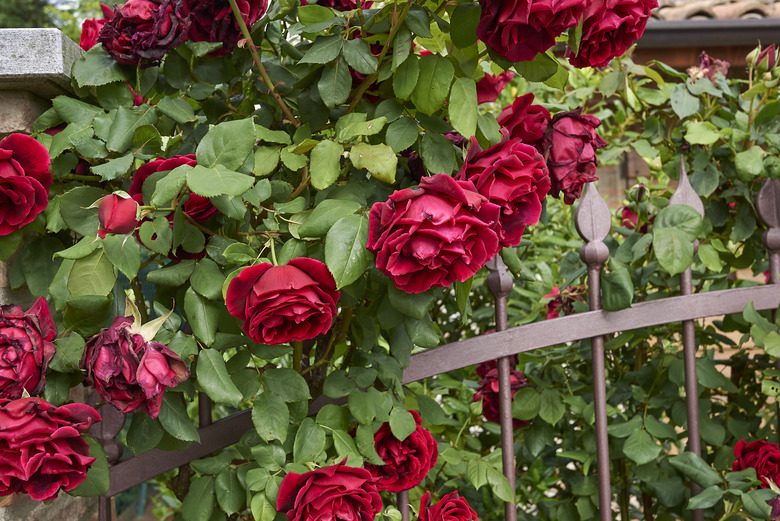The Best Climbing Roses
What separates the best climbing roses (Rosa spp.) from other varieties? Ease of care and disease resistance top the list. Fortunately, you don't have to sacrifice color or height to find climbing roses with these characteristics.
Of course, determining the "best" of anything is highly subjective, but rose experts and breeders from around the world vote every three years to induct one outstanding variety into the Rose Hall of Fame. Only one true climbing rose has ever been bestowed with this honor, making it the best climbing rose of all time.
Beginner-Friendly Climbing Roses
Beginner-Friendly Climbing Roses
Some would argue that not all roses are beginner-friendly, even though they have a tough, cold-hardy nature, but climbing roses in particular have earned a reputation for being less fussy than bush varieties. You can find easy-to-grow climbing roses with pale or bold blooms, glossy or matte leaves and compact or tall growth.
One climbing rose cultivar that has earned a reputation for being easy to grow is Rosa 'Don Juan' (USDA zones 5-9), which displays large, fragrant and deep-red blooms against glossy leaves. If you prefer the look of a daintier, pale-pink rose, you can't go wrong with Rosa 'Cecile Brunner' (zones 5-9), which was first introduced in 1881 and remains popular to this day.
For two-toned blossoms, try the Gertrude Jekyll rose (Rosa 'AUSboard,' zones 5-9), which produces pink and purple flowers with up to 80 petals each. For a softer color pairing, try the Bathsheba rose (Rosa 'AUSchimbley,' zones 5-9) which displays apricot and yellow flowers, blooms continuously and maintains a smaller growth habit than many other varieties.
Disease-Resistant Climbing Roses
Disease-Resistant Climbing Roses
Roses are susceptible to several diseases, including powdery mildew, black spot and rust. Some of the best climbing rose varieties to include in your garden are resistant to some or all of these pathogens, which makes caring for them easy and affordable. Keep in mind that "resistant" does not mean "immune," so it's important to still keep a watchful eye for anything amiss among your roses.
The butter-yellow Cup of Gold rose (Rosa 'JACausjucgog,' zones 5-9), for example, is resistant to powdery mildew and rust. The Honeymoon Arborose cultivar (Rosa 'KORhemtra,' zones 5-9), which has white blooms featuring a tinge of pink in the center, is resistant to powdery mildew and black spot.
Cultivars showing some level of resistance to powdery mildew, rust and black spot include Rosa 'Golden Showers' (zones 5-8), the Valentine's Day rose (Rosa 'WEKamrav,' zones 4-10), Rosa 'Altissimo' (zones 5-11), and Rosa 'Joseph's Coat' (zones 6-10). The Mortimer Sackler rose (Rosa 'AUSorts,' zones 5-9) and the Claire Austin rose (Rosa 'AUSprior,' zones 5-9) show reliable disease resistance and vigorous growth.
The World's Best Climbing Rose
The World's Best Climbing Rose
The World Federation of Rose Societies maintains the Rose Hall of Fame. These roses are considered the best of the best, and only one is inducted every three years. Only one true climbing rose has been inducted since the Rose Hall of Fame's inauguration in 1976: Rosa 'Eden.'
The Eden rose, also called the Pierre de Ronsard rose (Rosa 'Meiviolin,' zones 5-9), was inducted into the Rose Hall of Fame in 2006. It features large double blooms that can contain over 100 petals each. The edges of the petals are a light, almost pastel pink, but the body of each petal is a cream or peach color. It produces an abundance of foliage, displays disease resistance and blooms repeatedly.
Eden also climbs and trellises willingly but does not grow so vigorously as to be a nuisance. It features a mild fragrance and few thorns. In short, Eden is everything you could want from a rose.
